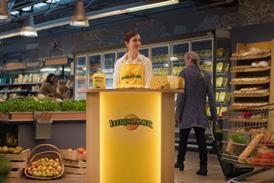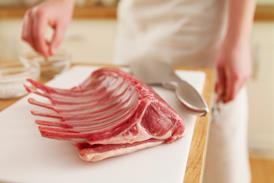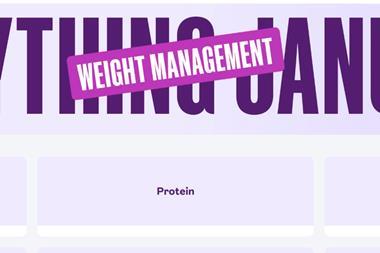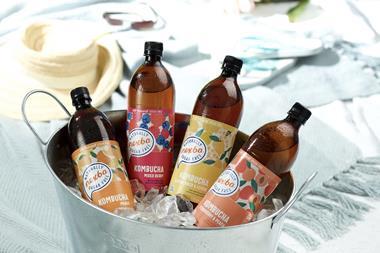It’s the ultimate fast food, convenient and healthy and with great traditional appeal. Bread is holding its own, says Helen Gregory
Some dieters might have binned toast and sandwiches on the Atkins diet, but their bread bins are bulging again.
According to the Federation of Bakers, bread sales fell slightly in 2003 but last year those of wholemeal and brown bread rose rapidly. While white bread dominates the market with more than a 70% share, it has lost share as sales of brown bread have grown at 14% [TNS - see table on page 62].
Interim director at the FoB, Andrew Brown, says:“This shows an increased awareness of healthy eating with consumers looking for more healthy options.”
He says the classic British sliced loaf is at the core of the UK diet and it is in fact a fast food. “It’s nutritious and you can’t get more convenient than a slice of bread.”
Budgens’ category buyer for bread, Nick Hill, says the Atkins diet hasn’t had much impact on bread sales. Any effect on sales has been negated by the demand for fresher, higher-quality products and there are more products on the market to counteract Atkins, he says.
Allied Bakeries’ commercial development team leader, Lawrence Trist, adds: “We expect to see people coming off Atkins and realising that bread is part of a healthy diet.”
Indeed, bread is an inherently healthy product, insist manufacturers, and they’re keen to promote this attribute.
Darren Grivvell, head of Hovis marketing, says low-carb breads have been performing as would be expected for a niche player within the dietary bread market. But he adds: “With the rise in brown and wholemeal breads, including dietary wholemeal breads, there appears to be a return to a more traditional and balanced approach to weight loss and weight maintenance.”
Mintel says the importance of the wellbeing factor is evident from the number of diet-conscious products and those catering for special dietary needs launched in the past year - the most recent trend being low-Glycaemic Index products.
According to TNS, the total
wrapped bread market is worth more than £1.2bn and value sales are up 8% in the latest year [TNS Superpanel 52 w/e February 27, 2005].
An increase in average price per pack has been the main driver of this growth, while pack sales by number have declined slightly.
The rolls and baps market (bread under 400g) is worth £725m and is showing a steady growth of 7% in value and 6% in volume.
The key driver is more frequent and increased spending per trip, as consumers trade up to more premium and speciality breads.
On average, one loaf is bought every week per UK household, of which 80% is wrapped bread and 20% from an in-store bakery.
This bias is reinforced by the investment that branded manufacturers are willing to make.
Witness the £10m relaunch of Hovis last month while Warburtons has spent £250m on improving its existing bakeries and has created a £60m super bakery - and plans to spend a further £250m by the end of the decade.
Companies are also investing in new
product development, which has contributed to growth, with bread products launched in the latest year now accounting for 3.3% of value sales.
Indeed, the bread market is no longer defined by a wall of pre-sliced and wrapped loaves, as there’s also plenty of activity among manufacturers pushing ethnic and speciality breads.
Hovis’s Grivvell says there are two key drivers that provide opportunities for growth in the category.
“Consumers will become increasingly discerning and will be more able and willing to trade up to more premium products. They will also look for ever-healthier products.
“We expect brown to grow faster than white, and healthy white to continue to grow dynamically.”
Some dieters might have binned toast and sandwiches on the Atkins diet, but their bread bins are bulging again.
According to the Federation of Bakers, bread sales fell slightly in 2003 but last year those of wholemeal and brown bread rose rapidly. While white bread dominates the market with more than a 70% share, it has lost share as sales of brown bread have grown at 14% [TNS - see table on page 62].
Interim director at the FoB, Andrew Brown, says:“This shows an increased awareness of healthy eating with consumers looking for more healthy options.”
He says the classic British sliced loaf is at the core of the UK diet and it is in fact a fast food. “It’s nutritious and you can’t get more convenient than a slice of bread.”
Budgens’ category buyer for bread, Nick Hill, says the Atkins diet hasn’t had much impact on bread sales. Any effect on sales has been negated by the demand for fresher, higher-quality products and there are more products on the market to counteract Atkins, he says.
Allied Bakeries’ commercial development team leader, Lawrence Trist, adds: “We expect to see people coming off Atkins and realising that bread is part of a healthy diet.”
Indeed, bread is an inherently healthy product, insist manufacturers, and they’re keen to promote this attribute.
Darren Grivvell, head of Hovis marketing, says low-carb breads have been performing as would be expected for a niche player within the dietary bread market. But he adds: “With the rise in brown and wholemeal breads, including dietary wholemeal breads, there appears to be a return to a more traditional and balanced approach to weight loss and weight maintenance.”
Mintel says the importance of the wellbeing factor is evident from the number of diet-conscious products and those catering for special dietary needs launched in the past year - the most recent trend being low-Glycaemic Index products.
According to TNS, the total
wrapped bread market is worth more than £1.2bn and value sales are up 8% in the latest year [TNS Superpanel 52 w/e February 27, 2005].
An increase in average price per pack has been the main driver of this growth, while pack sales by number have declined slightly.
The rolls and baps market (bread under 400g) is worth £725m and is showing a steady growth of 7% in value and 6% in volume.
The key driver is more frequent and increased spending per trip, as consumers trade up to more premium and speciality breads.
On average, one loaf is bought every week per UK household, of which 80% is wrapped bread and 20% from an in-store bakery.
This bias is reinforced by the investment that branded manufacturers are willing to make.
Witness the £10m relaunch of Hovis last month while Warburtons has spent £250m on improving its existing bakeries and has created a £60m super bakery - and plans to spend a further £250m by the end of the decade.
Companies are also investing in new
product development, which has contributed to growth, with bread products launched in the latest year now accounting for 3.3% of value sales.
Indeed, the bread market is no longer defined by a wall of pre-sliced and wrapped loaves, as there’s also plenty of activity among manufacturers pushing ethnic and speciality breads.
Hovis’s Grivvell says there are two key drivers that provide opportunities for growth in the category.
“Consumers will become increasingly discerning and will be more able and willing to trade up to more premium products. They will also look for ever-healthier products.
“We expect brown to grow faster than white, and healthy white to continue to grow dynamically.”


















No comments yet